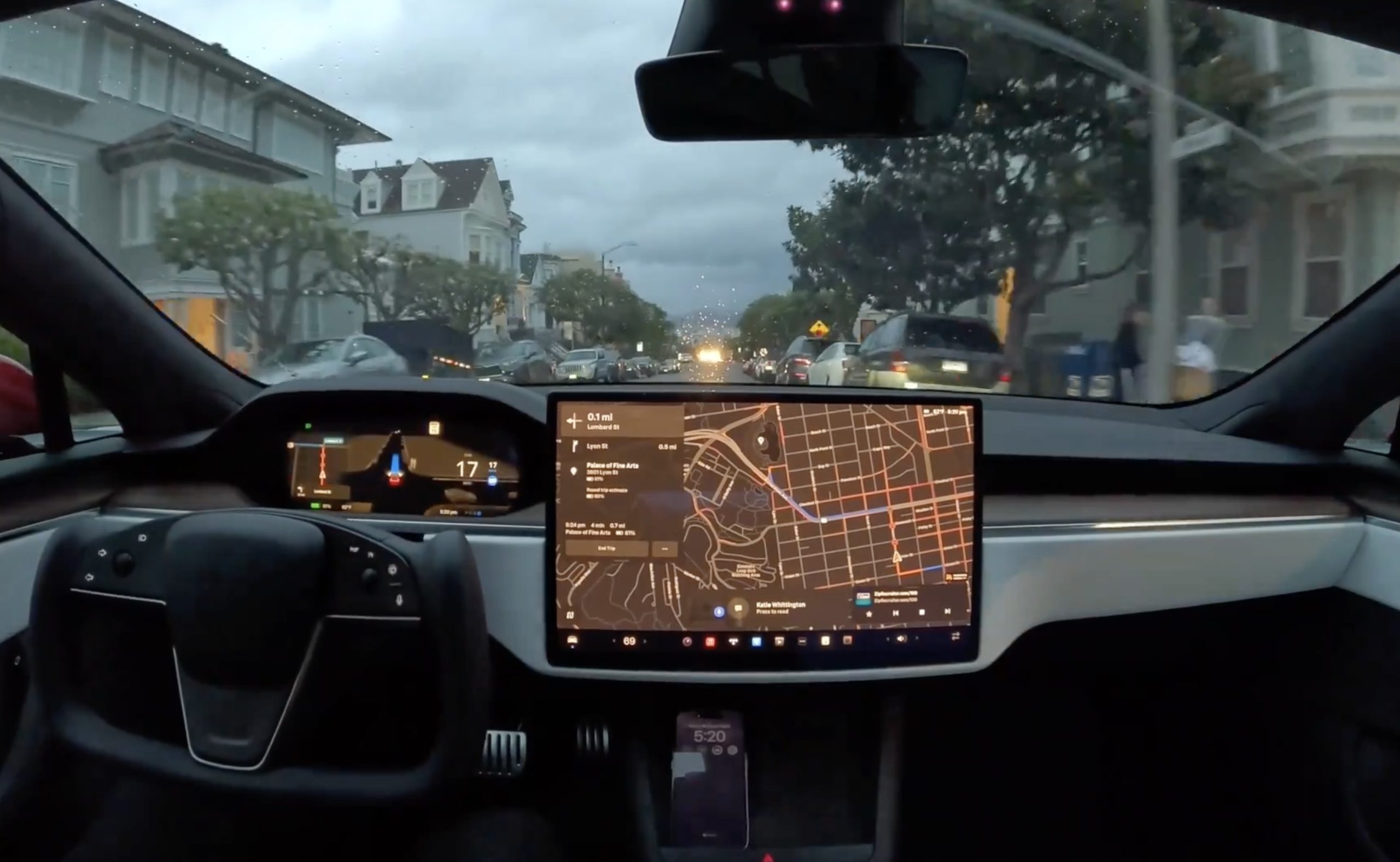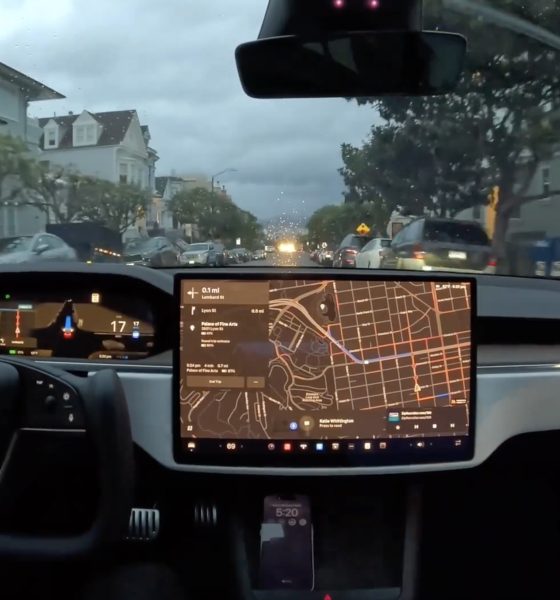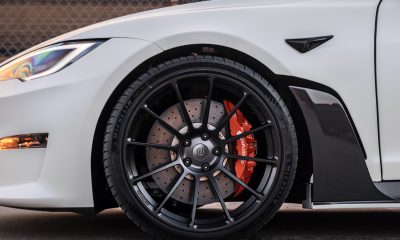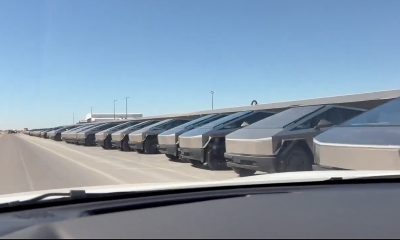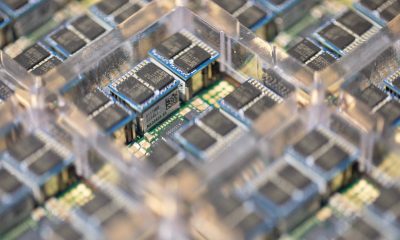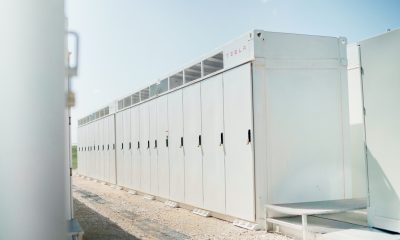Tesla has recently weighed in on the development of Tesla’s Full Self-Driving (FSD) and the U.S. regulatory framework, following the company’s rollout of FSD (Supervised) and its announcement of plans to unveil a long-awaited robotaxi later this year.
FSD v12 has been rolling out over the past several months, and with Tesla officially replacing the “beta” moniker with “supervised” and announcing plans to unveil the robotaxi later this year, higher levels of vehicle autonomy have been at the forefront of shareholder and public conversations.
Although some have assumed that the regulatory framework for FSD and other semi-autonomous driving systems would be the most difficult part of bringing FSD and a robotaxi to the market, two Tesla executives have since shared their thoughts, noting the sheer difficulty of developing such a software.
Tesla’s Elon Musk reiterates FSD licensing offer for other automakers
On Friday evening, CEO Elon Musk shared his thoughts on the matter in response to a thread on X posted last August, which included thoughts on Tesla’s place in the future market of autonomous driving.
In his response, Musk wrote that it has been “staggeringly difficult to make generalized self-driving work,” adding that Tesla’s investments into training compute, data pipelines and video storage will cost more than $10 billion cumulatively this year. Still, Musk says that this figure pales in comparison to the amount of money Tesla will be able to generate using the software:
Pretty much.
It has been staggeringly difficult to make generalized self-driving work, requiring all that you describe above and more.
The investment in training compute, gigantic data pipelines and vast video storage will be well over $10B cumulatively this year.
But that…
— Elon Musk (@elonmusk) April 6, 2024
Along with Musk’s thoughts late Friday, fellow Tesla executive Rohan Patel, Vice President of Policy and Business Development, shared his thoughts on how difficult developing FSD has been on Saturday morning. Patel responded to a post from Omar of Whole Mars Blog, in which Tesla followers and FSD enthusiasts pointed out that developing the system was much more difficult than the regulatory side of things.
Patel says that, while the regulatory frameworks and fundamental mindset surrounding general autonomy both need to change, his team’s technology advancements will be what pushes these frameworks forward.
Thanks @WholeMarsBlog. Now all of @Tesla thinks my team’s job is easy!
Joking aside – I think you’re exactly right. We do have to change the fundamental mindset and the regulatory frameworks, but we will 💯 get that done with the right technology advancements. Won’t be an… https://t.co/KwVzwbrUtO
— Rohan Patel (@rohanspatel) April 6, 2024
Tesla’s FSD v12 has long been discussed as a key piece of the puzzle for unlocking higher levels of autonomy in the future. Last week, the FSD system surpassed one billion miles driven by all of its users, and the system is expected to continue improving as human drivers use it more and more.
The past few weeks have indicated significant confidence in FSD (Supervised), from Tesla offering one-month free trials and mandatory test drives with the system, to the company’s plans to detail the highly anticipated robotaxi later this year. They also highlight Tesla’s recent focus on having executives interact directly with fans, shareholders and others on social media, and in other media appearances.
Updated 4/7/24: Fifth paragraph edited for accuracy.
What are your thoughts? Let me know at zach@teslarati.com, find me on X at @zacharyvisconti, or send us tips at tips@teslarati.com.
News
Elon Musk shuts down Tesla ‘AMG’ division speculation: ‘Focus is autonomy’
“I think it’s best to leave that to the custom shops. Tesla’s focus is autonomous cars, building futuristic autonomous cars. We want the future to look like the future.”
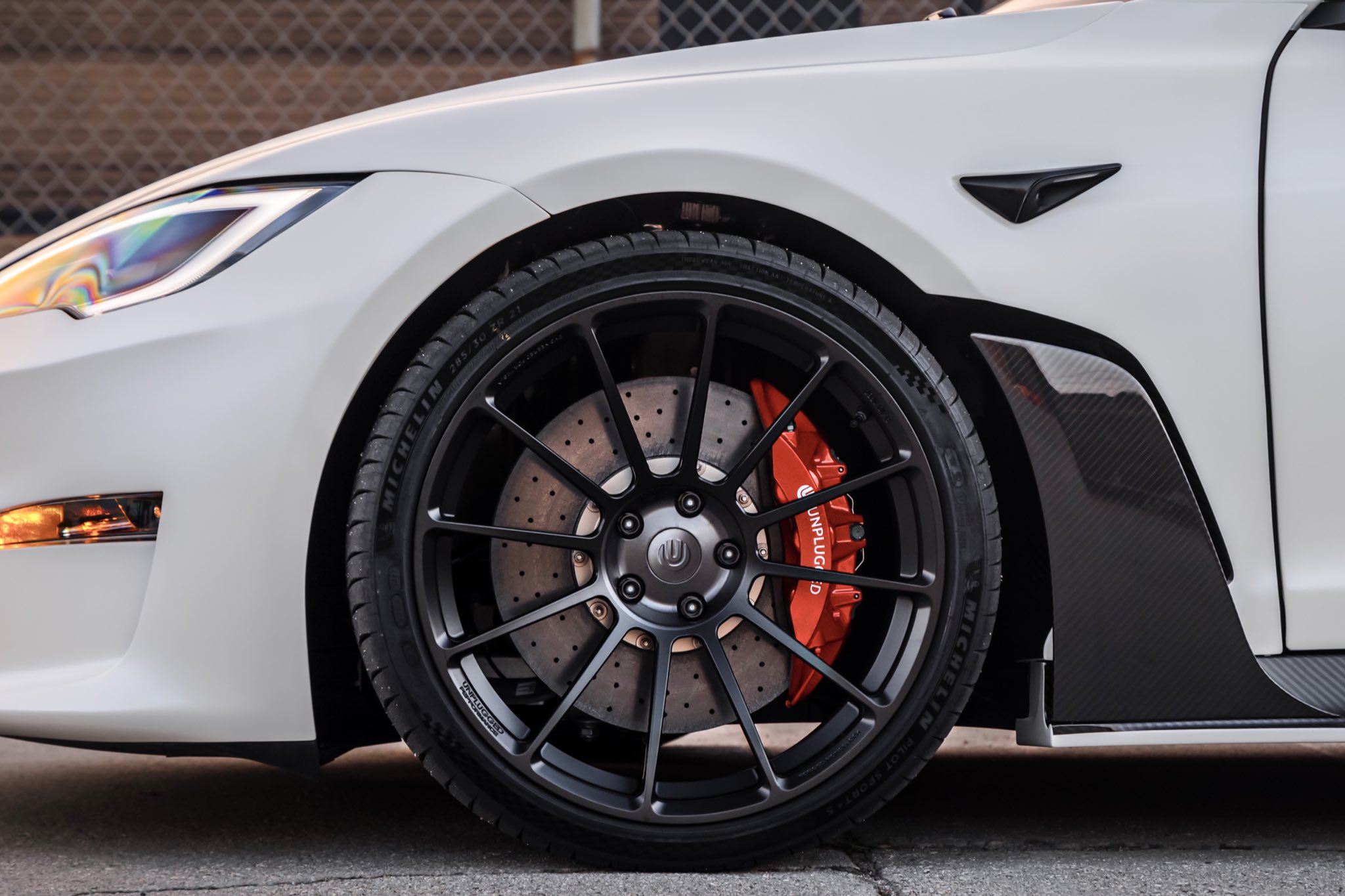
Tesla CEO Elon Musk was asked by Joe Rogan late last week whether the company would ever consider establishing an “AMG division” like Mercedes-Benz has established for powerful, race-inspired vehicles.
However, Musk turned down any talk of that, highlighting that the company is laser-focused on autonomous vehicles, seemingly hinting that any distraction from autonomy would be a detriment to the future.
Rogan drives a Tesla Model S himself, but it is not your run-of-the-mill all-electric sedan. Already outfitted with the Plaid powertrain that Tesla developed, Rogan took his vehicle to Unplugged Performance for a true performance outfitting.
The vehicle is completely overhauled with performance parts and seats. Known as the Model S-APEX, Rogan took delivery of it from Unplugged in January.
Rogan asked Musk on Friday during his most recent appearance on the Joe Rogan Experience podcast whether Tesla would ever establish an “AMG division” that would focus on catering Teslas to performance-based standards.
Musk said:
“I think it’s best to leave that to the custom shops. Tesla’s focus is autonomous cars, building futuristic autonomous cars. We want the future to look like the future.”
🚨 Elon Musk was asked by Joe Rogan if he would ever create an “AMG division” where customization and performance options are available.
Musk said:
“I think it’s best to leave that to the custom shops. Tesla’s focus is autonomous cars, building futuristic autonomous cars. We… pic.twitter.com/k7qy7UQc60
— TESLARATI (@Teslarati) October 31, 2025
Tesla fans have said for years that the company should consider acquiring Unplugged Performance and its Upfit Tesla division, which recently outfitted the Las Vegas Metropolitan Police Department’s fleet of Cybertruck cruisers.
However, it seems Tesla will keep things separate. Musk is primarily focused on autonomy, which will drive the technology forward and drive shareholder growth. Something like an outfitter for performance would be a cool thing for the owners who have the interest and the money.
It’s not a tremendous revenue driver or anything that would contribute to the financial state of the company. Mercedes-Benz, for example, is more accessible for consumers as it sold over 140,000 units from its AMG brand in 2024.
Tesla Model Y driver starts race in reverse, still wins against AMG SUV
It helps with driving revenue higher by as much as 15 percent compared to similar models that are not AMGs. However, would Tesla see this much of a benefit? Likely not, because the Performance trim already caters to many owners.
Cybertruck
Tesla Cybertruck fleet takes over at SpaceX’s Starbase
Interestingly, the Cybertruck uses the same exterior, a stainless steel alloy, as SpaceX rockets. This synergy between the two companies and their very different products shows a very unified mentality between Musk companies.
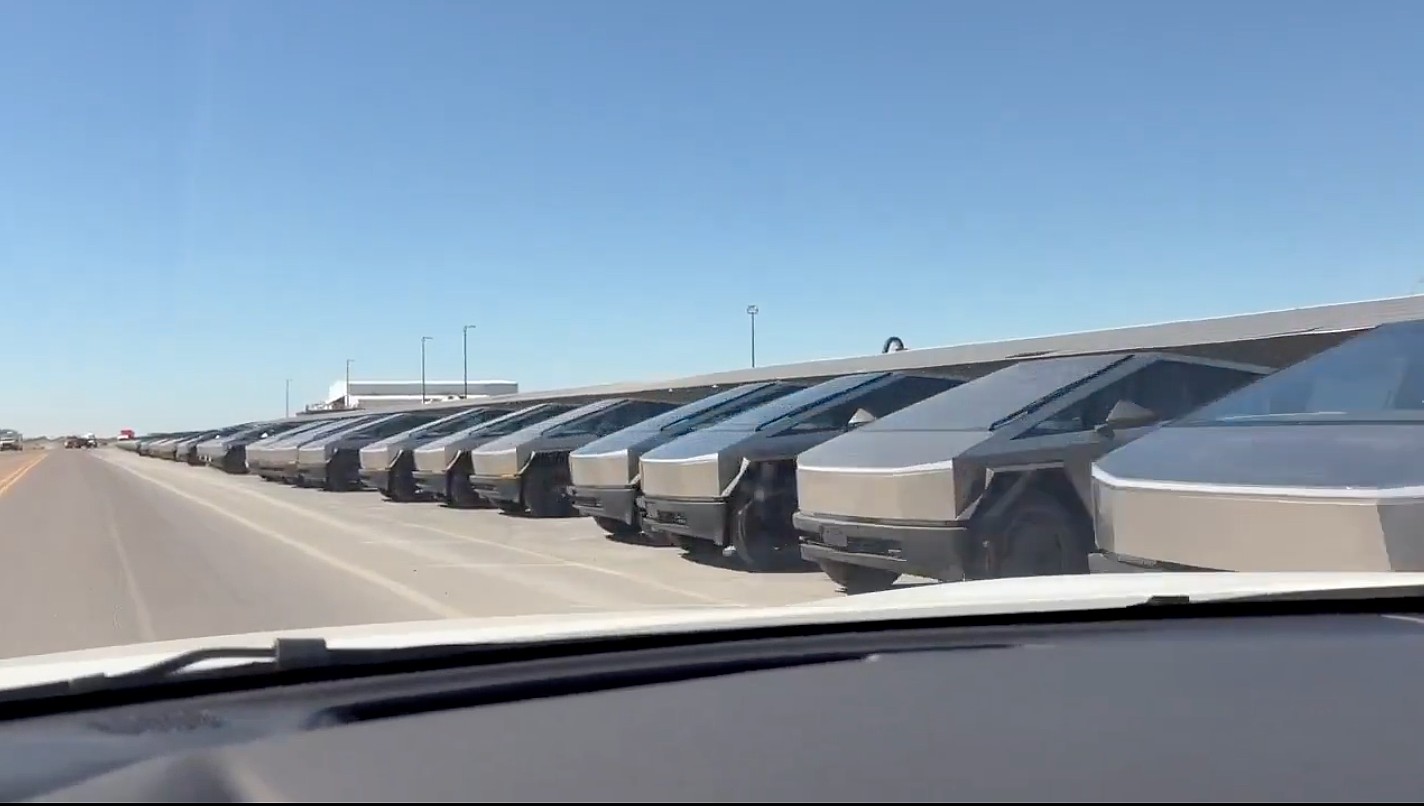
Tesla Cybertrucks have taken over at SpaceX’s Starbase facility in Texas, as hundreds of the all-electric pickup trucks were spotted late last week rounding out a massive fleet of vehicles.
The Cybertruck fleet is geared toward replacing gas vehicles that are used at Starbase for everyday operations. The only surprise about this is that it was not done sooner:
Was just visiting. pic.twitter.com/5Q9wPPaeuH
— Derek Li (@derek1ee) October 31, 2025
Deliveries have been going on for a few weeks, as Cybertrucks have made their way across the state of Texas from Austin to Starbase so they could be included in SpaceX’s fleet of vehicles at the facility.
Interestingly, the Cybertruck uses the same exterior, a stainless steel alloy, as SpaceX rockets. This synergy between the two companies and their very different products shows a very unified mentality between Musk companies.
However, there are some other perspectives to consider as SpaceX is utilizing such a massive fleet of Cybertrucks. Some media outlets (unsurprisingly) are seeing this as a move of weakness by both Tesla and SpaceX, as the aerospace company is, in a sense, “bailing out” lagging sales for the all-electric pickup.
It’s no secret that Tesla has struggled with the Cybertruck this year, and deliveries have been underwhelming in the sense that the company was anticipating between 1 million and 2 million orders for the vehicle before it was widely produced.
A lot of things changed with the Cybertruck between its 2019 unveiling and 2023 initial deliveries, most notably, price.
The price of the Cybertruck swelled significantly and priced out many of those who had pre-ordered it. Some have weighed the option of whether this purchase was a way to get rid of sitting inventory.
However, it seems more logical to consider the fact that SpaceX was likely always going to transition to Teslas for its fleet, especially at Starship, at some point.
It doesn’t seem out of the question that one Musk company would utilize another Musk company’s products, especially considering the Cybertruck has been teased as the vehicle that would be present on Mars.
Elon Musk
Elon Musk subtly confirms one of Tesla AI8’s uses, and it’s literally out of this world
Elon Musk appears to have subtly confirmed that Tesla’s upcoming AI8 chip won’t be limited to vehicles or robots alone.
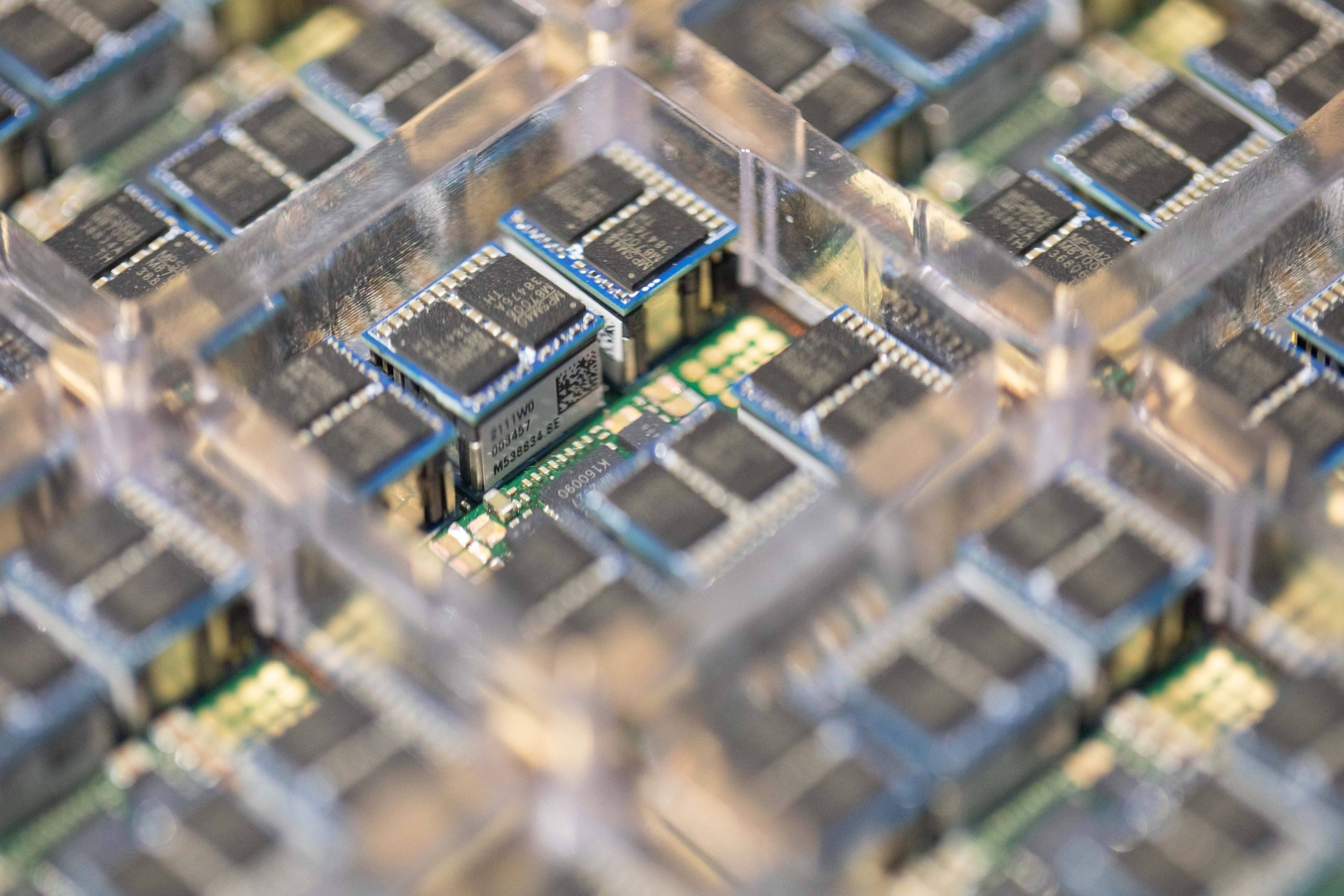
Elon Musk appears to have subtly confirmed that the uses of Tesla’s upcoming AI8 chip won’t be limited to vehicles or humanoid robots alone.
If Musk’s recent responses on X are any indication, it would appear that Tesla’s AI8 will be used by the CEO’s other companies, and its applications would literally extend out of this world.
Tesla’s AI8 could extend beyond vehicles
Musk’s update came on the heels of his recent comments, where he revealed that Tesla was not just working on its AI5 and AI6 chips. The company is also designing AI7 and AI8. This comment caught a lot of attention, with some wondering why Tesla feels the need to design an AI8 chip when AI4 seems on track to be a good fit for autonomous driving.
Amidst these speculations, an X user suggested that Elon Musk’s comment about AI8 being out of this world could actually be quite true in the literal sense, as it could be used as the chip for SpaceX’s orbit data centers. Musk subtly confirmed this, as he responded to the X user’s post with a bullseye emoji.
Musk’s subtle confirmation that AI8 will be used by SpaceX’s in-space data centers presents a pretty interesting future for the electric vehicle maker. Synergy among Elon Musk-led companies is nothing new, but having Tesla produce chips for SpaceX is undoubtedly something that’s never really been done before.
SpaceX’s space-based computing with Starlink V3 satellites
Musk previously stated that SpaceX plans to use its Starlink V3 satellites to develop space-based data centers. In response to an Ars Technica report on autonomous space construction, he wrote on X: “Simply scaling up Starlink V3 satellites, which have high-speed laser links, would work. SpaceX will be doing this.”
The concept, while ambitious, could address growing energy and cooling constraints facing Earth-based data centers amid the AI boom. Space-based clusters could also cut down on land and water usage, though critics have questioned their cost and maintainability.
Musk recently called the orbital data center project “a very big deal,” and given SpaceX’s history of turning improbable ideas into operational systems, it may not be too far-fetched at all, especially since SpaceX’s Starlink V3 platform is capable of up to 1 terabit per second (Tbps) throughput.
-
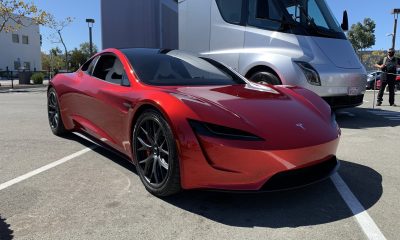
 News2 weeks ago
News2 weeks agoTesla updates fans on its plans for the Roadster
-
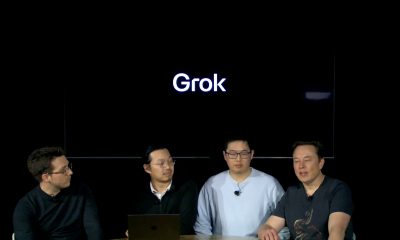
 Elon Musk2 weeks ago
Elon Musk2 weeks agoElon Musk: Grok 5 now has a 10% chance of becoming world’s first AGI
-
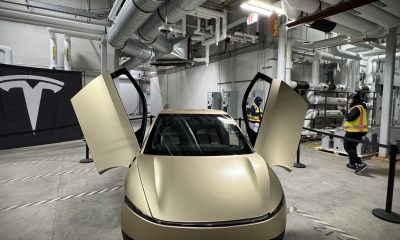
 News2 weeks ago
News2 weeks agoTesla is ramping up its hiring for the Cybercab production team
-
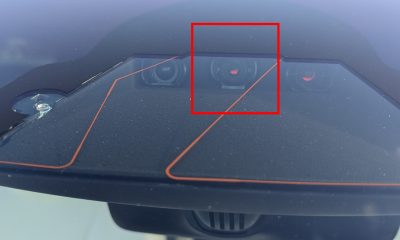
 News2 weeks ago
News2 weeks agoTesla rolled out a new feature with FSD v14 to fix a major complaint
-
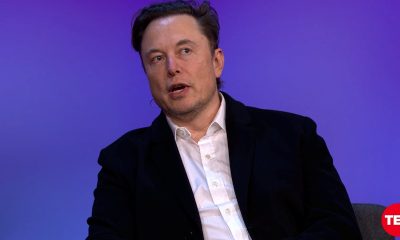
 Elon Musk2 weeks ago
Elon Musk2 weeks agoElon Musk hits back at former Tesla employee who disagrees with pay package
-
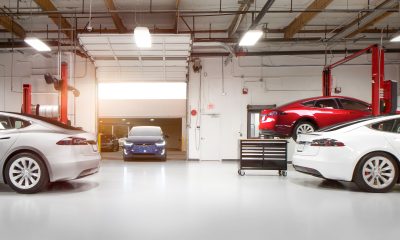
 News2 weeks ago
News2 weeks agoTesla just made Service even easier and more convenient
-
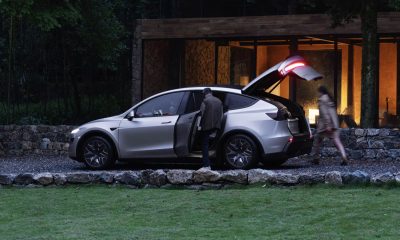
 News2 weeks ago
News2 weeks agoTesla Model Y L becomes China’s 4th best-selling mid-to-large SUV in its first month of sales
-
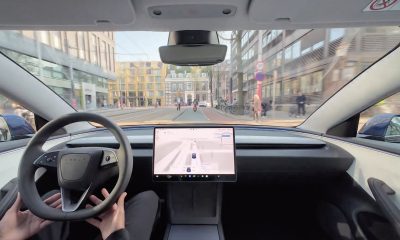
 News2 weeks ago
News2 weeks agoTesla Full Self-Driving’s new version officially gets a wider rollout

